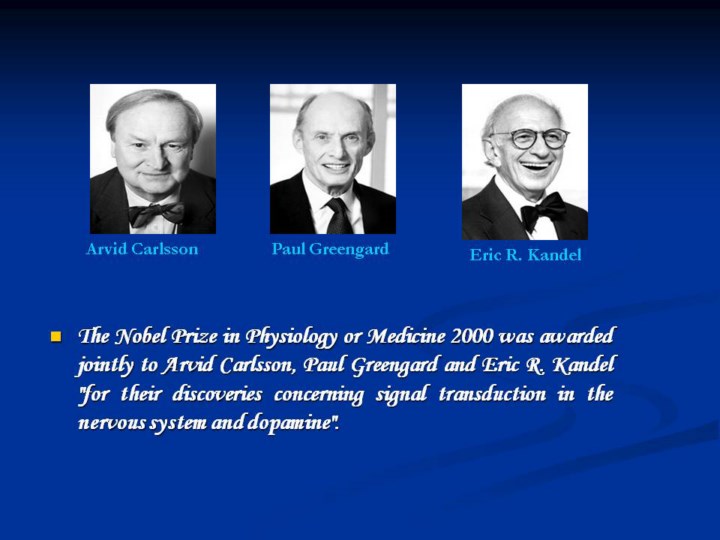| front |1 |2 |3 |4 |5 |6 |7 |8 |9 |10 |11 |12 |13 |14 |15 |16 |17 |18 |19 |20 |21 |22 |23 |24 |25 |26 |27 |28 |29 |30 |31 |32 |33 |34 |35|36 |37 |38 |39 |40 |41 |42 |43 |44 |45 |46 |47 |48 |49 |50 |51|52 |53 |54 |55 |56 |57 |58 |59 |60 |61 |62 |63 |64 |65 |66 |67 |68 |review |
 |
Arvid Carlsson was awarded
the Nobel Prize for his discovery of the neurotransmitter dopamine and its
clinical relevance to a condition known as Parkinsonís disease. The information from one neuron is passed on to another neuron or to an effector through small special gaps or spaces called synapses.
A neuron can have thousands
of such special gaps or synapses with other neurons. These gaps or synapses
are bridged by chemicals known as neurotransmitters. These are chemicals
that are synthesized in the neurons, stored in synaptic vesicles, released
in the synapses; transfer the information by binding to its receptors in the
other neuron to start a cascade of events leading to a specific response.
The discovery regarding signal
transduction in nervous system triggered a lot of researches that led to
an understanding of the mechanisms involved in several neurological
disorders and consequently helped in the development of new drugs and
therapies for the treatment of these disorders. Researches targeting the
cure of Parkinsonís disease and the loss of learning or memory are main
results of this discovery. So far, there is no absolute cure for these
diseases and any progress made in this area is a significant step forward
towards the amelioration of human sufferings due to these neurological
disorders.
|